The roars and challenges of aggression echo across the table. Humans in gleaming armor look up to a massive behemoth surrounded by elves. If that wasn’t enough, something else roils to life behind them and aven begin launching themselves into the sky. Together, each force seems to be beset on all sides by the others, each eying each other warily until a command is issued to move.
So it comes to pass. The aven start to dive and as the dead finish their writhing from the ground. Elves and knights try to mount a defense with little success as the flying horde simply passes most of them, only having to dance around a few arrows and sky-mounted soldiers.
The wind picks up. At first there is a pause, and then a wall of air as it moves faster and more forcefully across the table. The aven’s attack is negated, the turbulence knocking them away and out of sight. The elves and behemoth, despite their numbers and the size of the monster, are also blown away from the knights. The newly risen dead didn’t even get to shamble in any direction.
The table cleared and the howling wind having abated, the knights after a brief regrouping charge to their goal and attempt to slay a false god in the name of their own.
In Commander, mass removal or board wipes can change the state of the game in sometimes dramatic ways. Other times, it can stagnate a game to the point of having it feel like the game itself starts over. It all really depends on the game when a board wipe is used and why. Today we talk about leveling the playing field.
DAY OF JUDGMENT
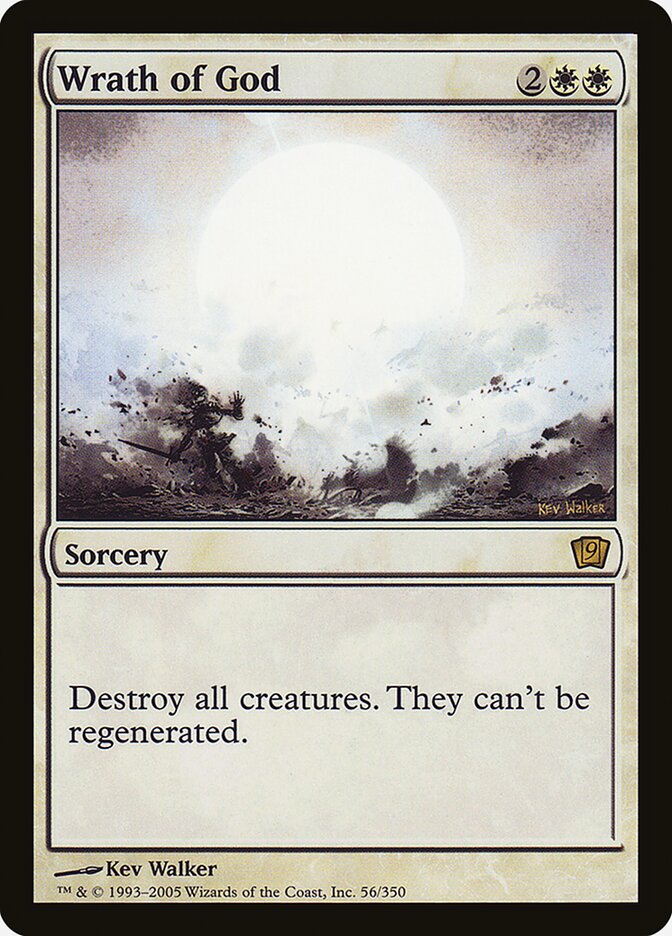
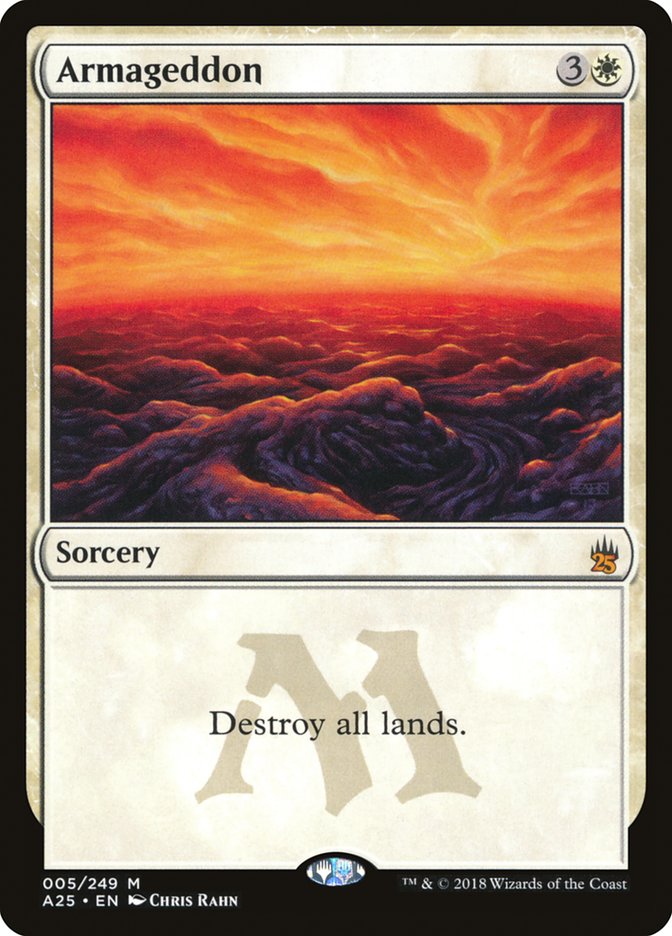
In the beginning, there was judgment. This came in the form of Wrath of God, a sorcery for 2WW that read “All creatures in play are destroyed and cannot be regenerated” (regenerate is an ability that says “the next time this creature would be destroyed (by damage or an effect) it isn’t. Instead remove all damage from it, tap it, and remove it from combat)). This, along with Armageddon, are the original mass removal cards and their strong association with White until more recent years. If you thought there was ever a reprieve from mass removal in Magic’s history, there wasn’t one.
This also highlights something that may be exclusive to Commander and more social formats like it. By and large, cards like Wrath of God are considered fine in small numbers for controlling the board state and trying to get ahead. Cards like Armageddon are not accepted at most tables of Commander because of the large impact it has on gameplay. Most decks can lose some creatures and continue to play no matter how slowly. Most decks can’t survive and do anything without their lands.
These cards represent the ends of a spectrum for the most part. While I’d put mass removal that doesn’t really affect the caster on the far end beyond removal like Wrath of God, but we’ll get to those. There are many more kinds and flexible mass removal cards in Magic nowadays, but even so knowing when is the best time to play them can be hard, especially depending on the perspectives of the players involved.
FAREWELL
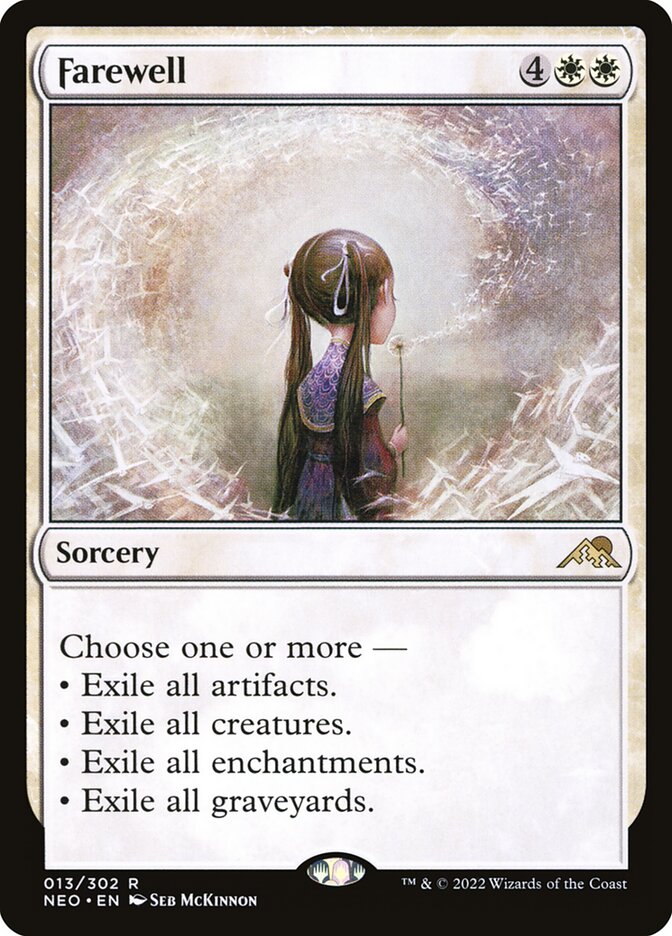
Until more recently, the online Commander zeitgeist had been putting down mass removal in favor of moving the game forward to a conclusion and instead using single or multitarget removal to help achieve that end. This thought process highlights letting people play the game and still have it go somewhere, even if you lose said game. That was fine and good, but like all things including the use of mass removal, things change with time to adapt to the circumstances.
In the contemporary thinking of today, mass removal is becoming more mainstream again, which also means using them “correctly” has become a small topic of discussion. In the most basic sense, this can simply be separated into two categories: acceptable and not acceptable.
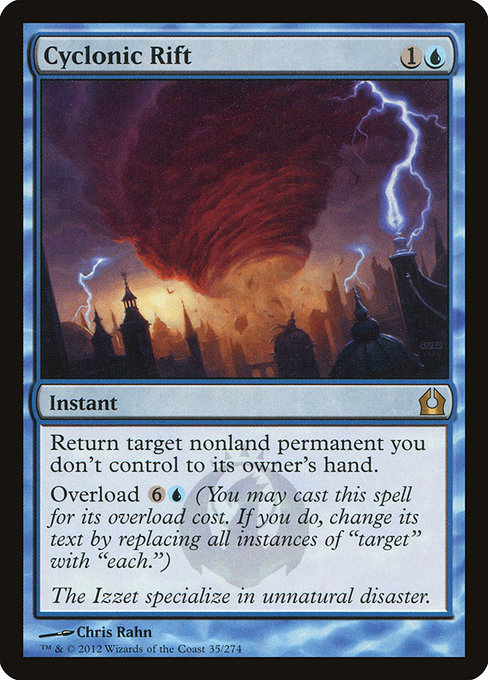
Let’s start with the more taboo ones, and let me say here all of my articles focus on casual Commander and not competitive. With that frame of reference, there are a number of cards that player’s either look down upon or groan when they are cast. Namely, and I think something that has finally dethroned Cyclonic Rift, is Farewell. Farewell often feels like a complete reset on the game in more ways than one. Since it exiles instead of destroys, the recovery from the wipe is seriously hampered in a number of ways, most specifically graveyard recursion just doesn’t matter. Cards like Heroic Intervention and Flawless Maneuver are useless. Teferi’s Protection and sacrifices can still work, though the latter depends on the caster of Farewell not choosing graveyards.
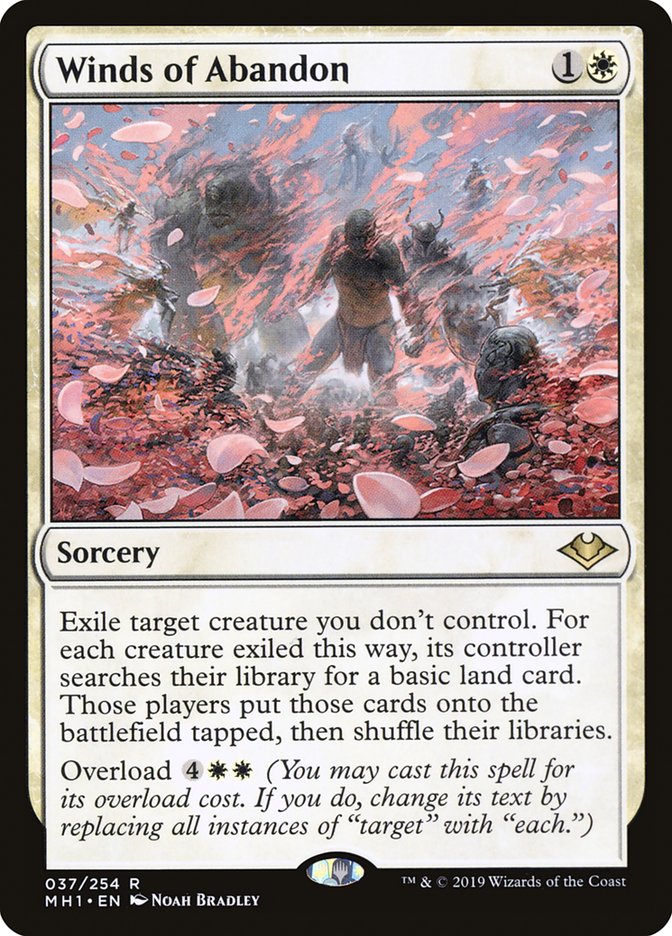
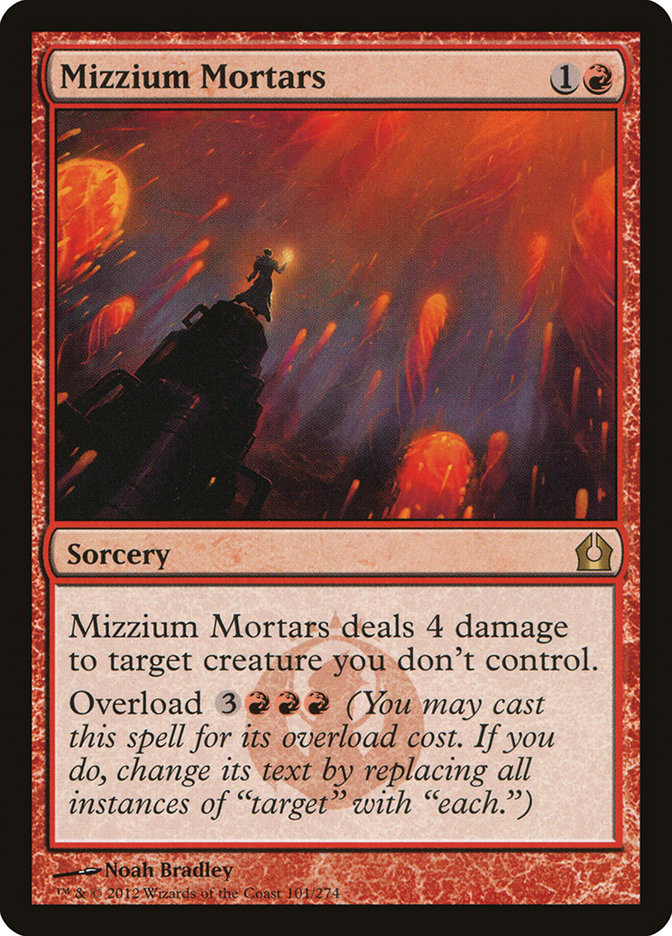
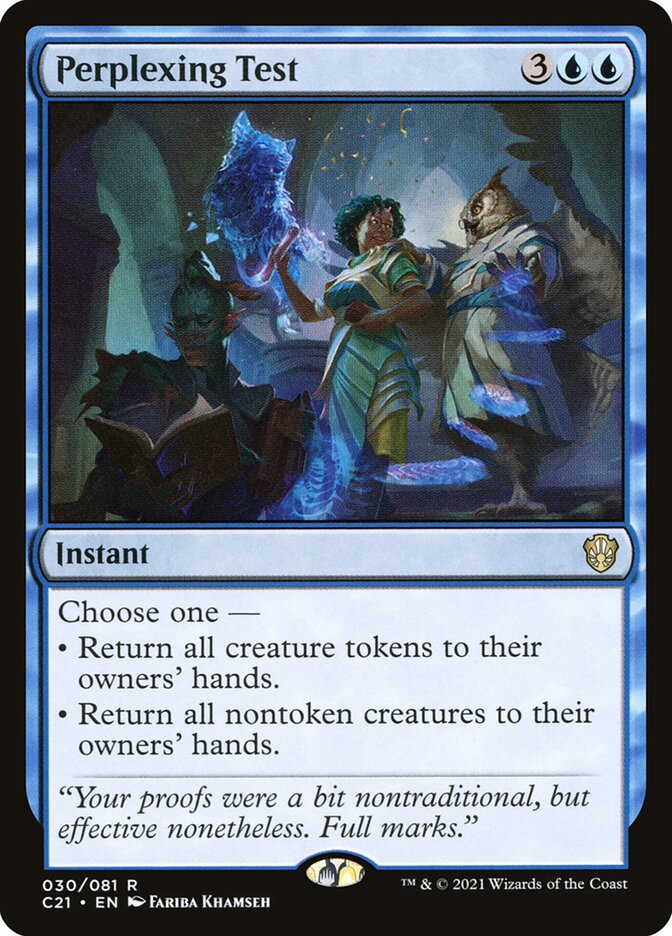
Often the problem with Farewell when compared to something like Cyclonic Rift, Winds of Abandon or possibly MIzzium Mortars and Perplexing Test is that it gets rid of so much permanently and doesn’t really push the player who casts Farewell ahead in almost any way. While it is important to have answers to cards in Magic, sometimes things just do a bit too much. To a lot of players, there is no good time to cast Farewell.
BLOOD ON THE SNOW
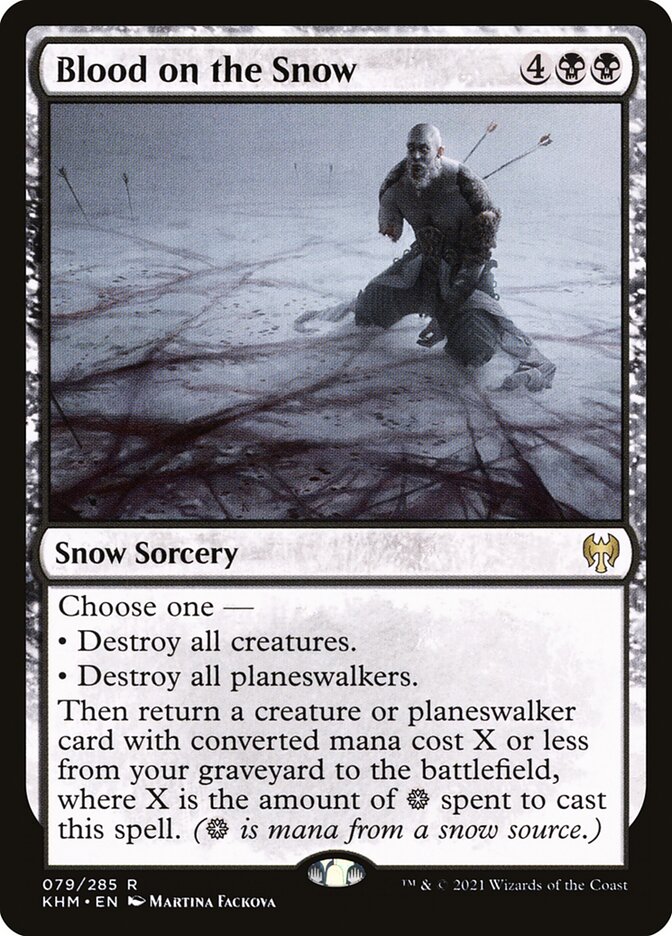
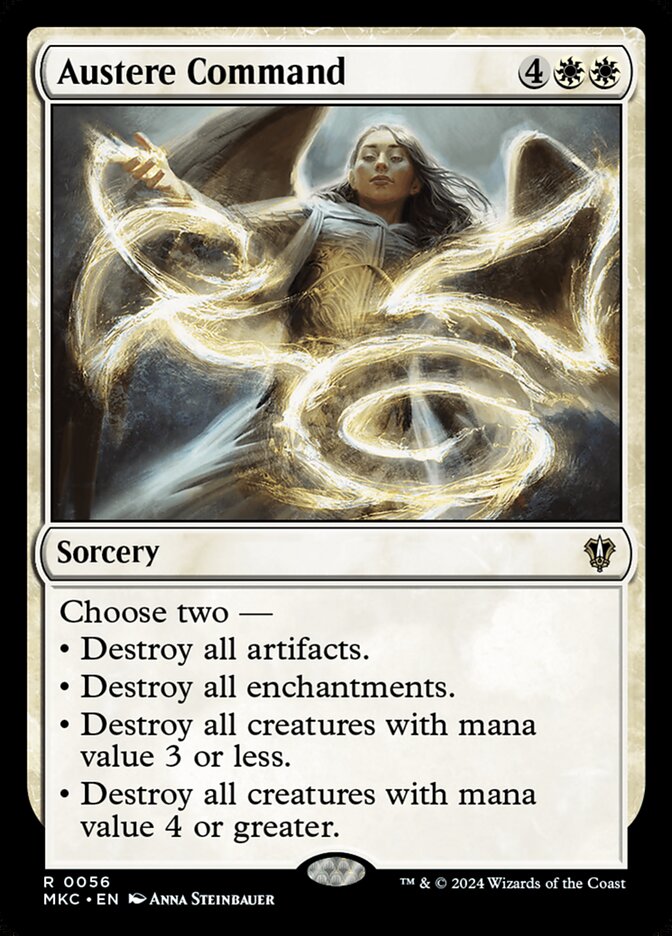
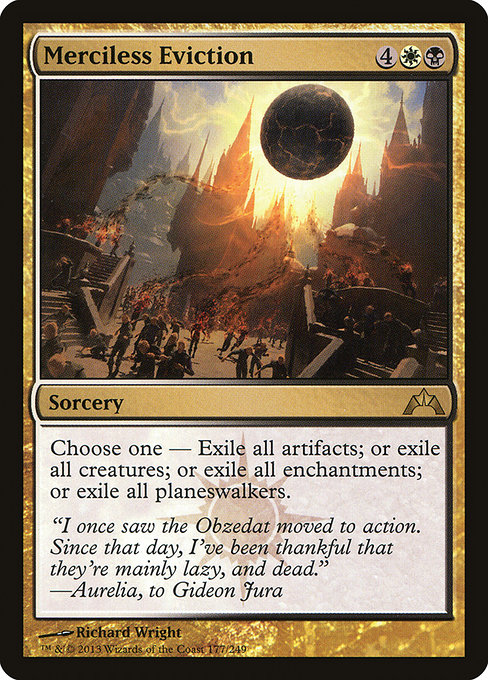
So what of other, less all-in removal? Some of what makes Farewell so strong is that it can hit and get rid of so much, but there are other mass wipes that can do just as much to keep the game going somewhere without breaking the table legs. A card like this and is still reprinted sometimes in commander precons is Austere Command. It doesn’t hit as much at once, but there is flexibility there to not only get you ahead by keeping some of your own stuff on the tabletop but also to seriously hamper other decks that rely on a certain thing too much. Another such card to consider is Merciless Eviction.
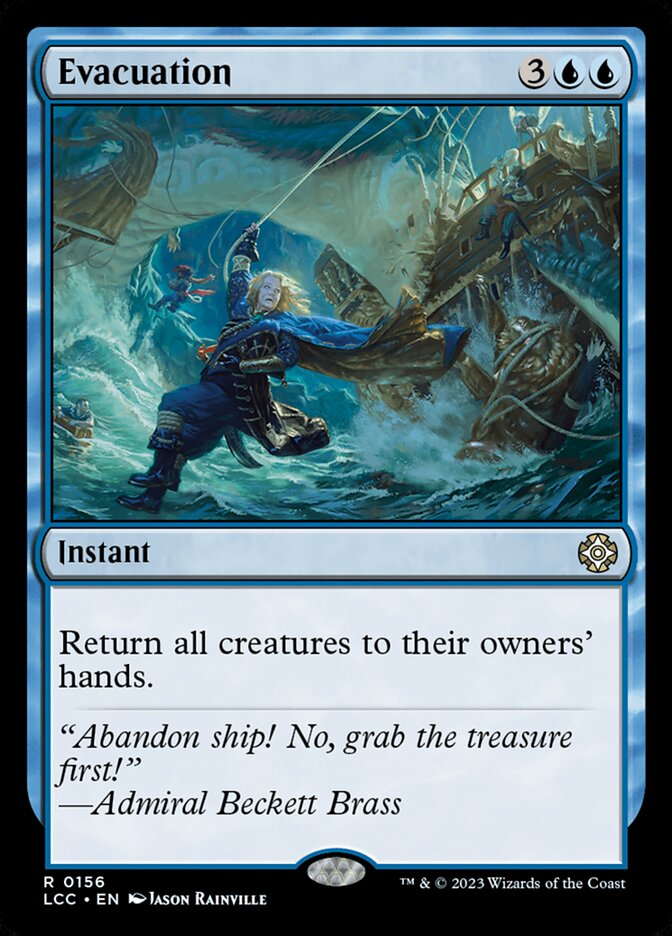
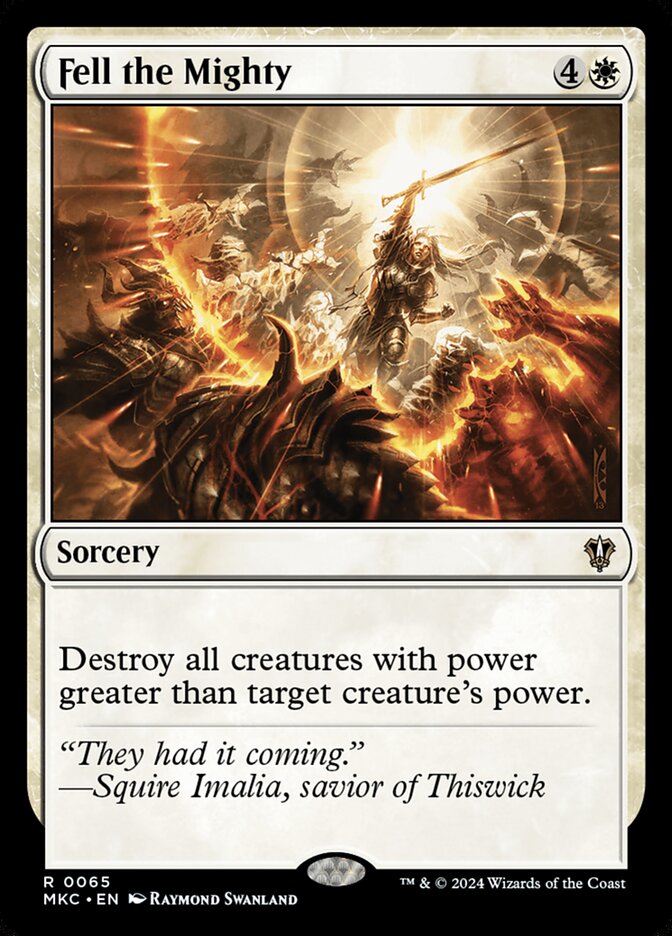
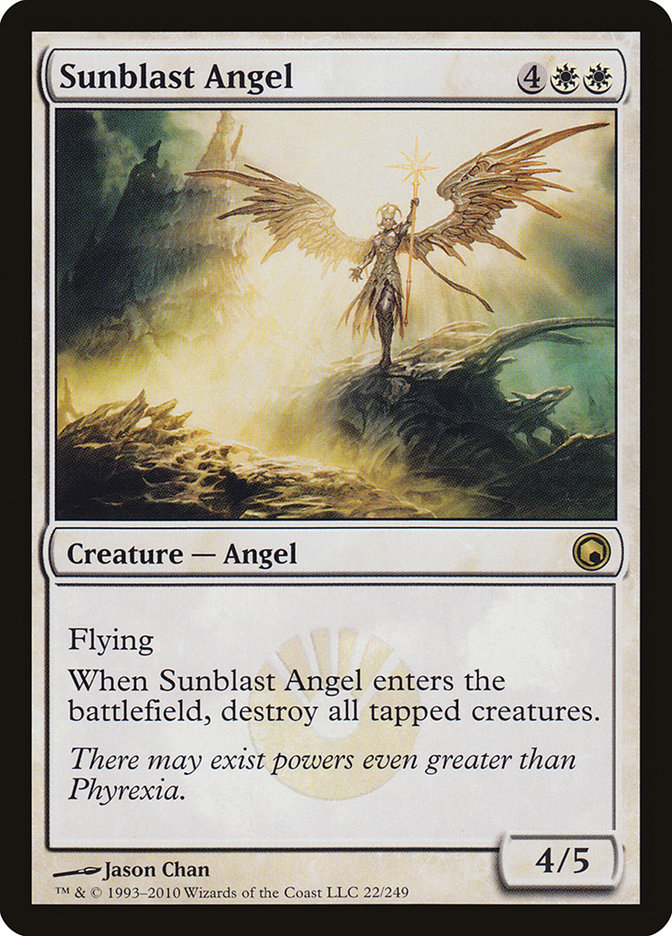
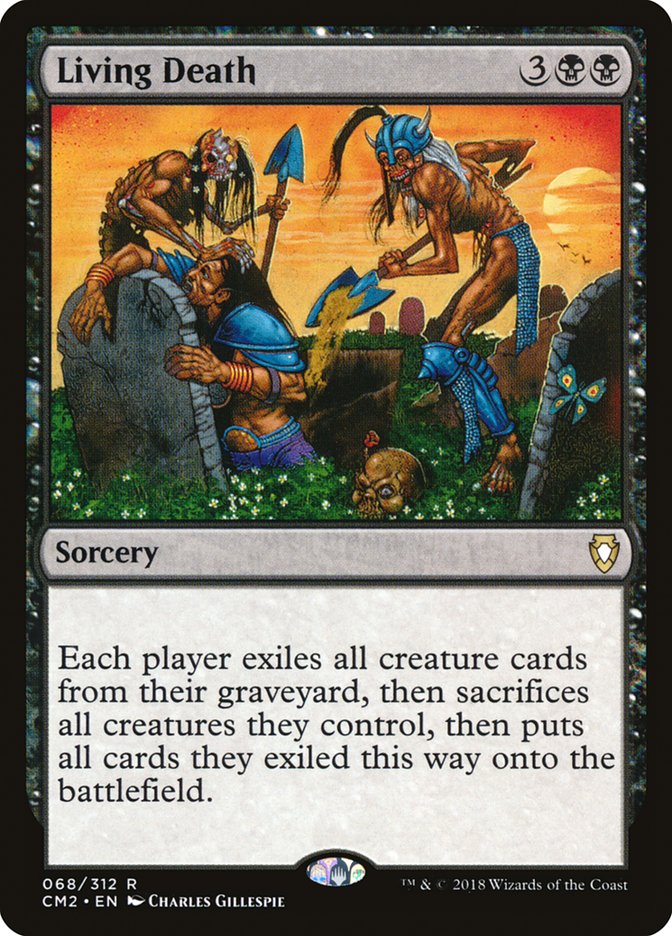
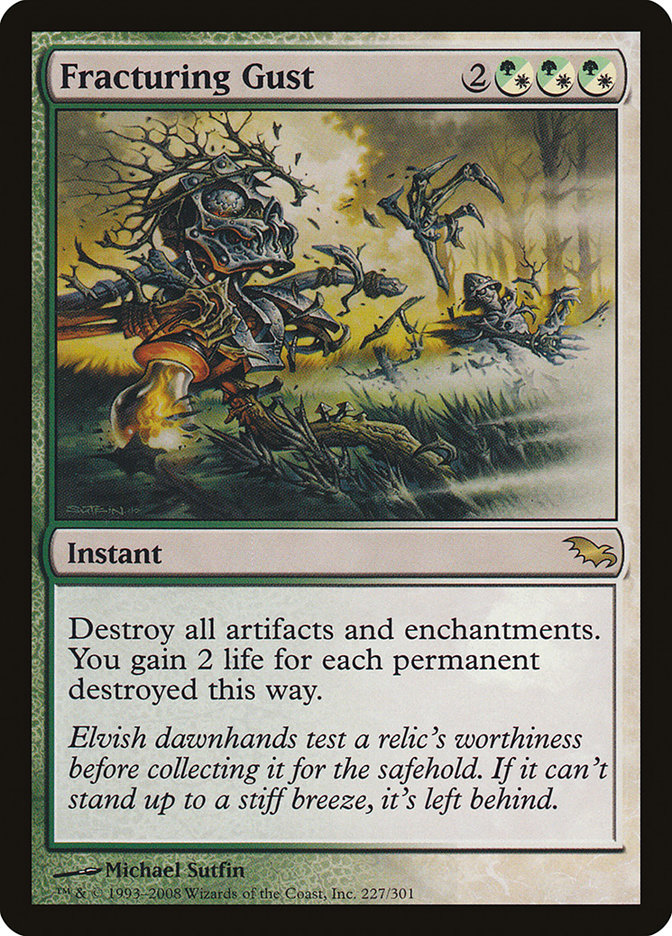
Modal removal like Austere Command can be very good, but as I alluded to earlier, one sided wipes can really get you ahead or at least save the time you’ve invested in setting up. There are situational one-sided wipes like Perplexing Test which I use in my Xyris deck to break though tough board states while keeping my token army. Evacuation can be used against indestructible creatures, or Fell the Mighty if you’re running a go-wide deck that frequently fights larger creatures. For something more specific like Sunblast Angel or Living Death or Fracturing Gust, consider the metas you run in to see if they will help more than hurt you. We are looking to get closer to ending the game after a wipe when able.
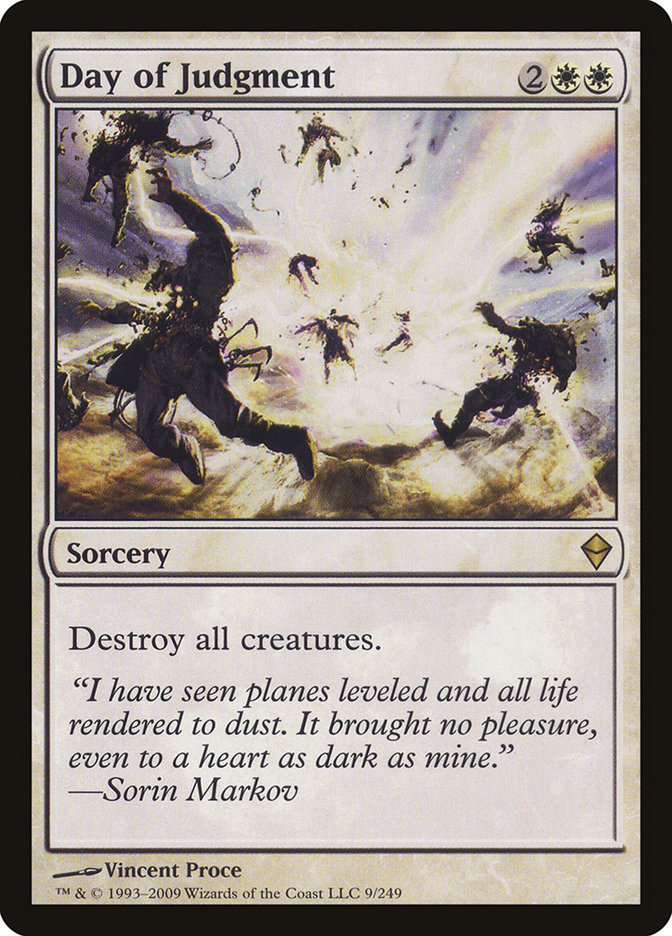
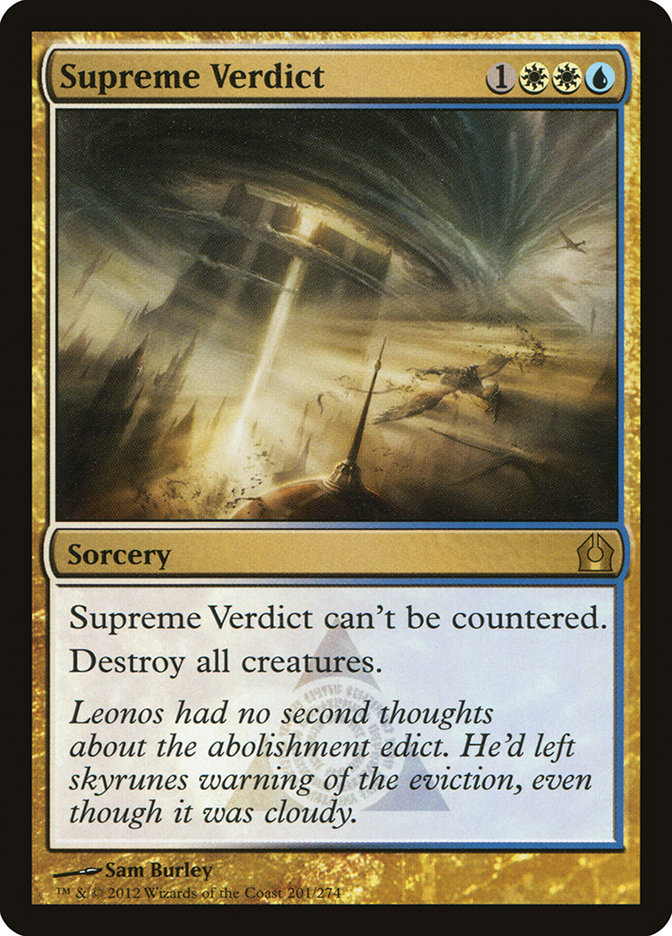
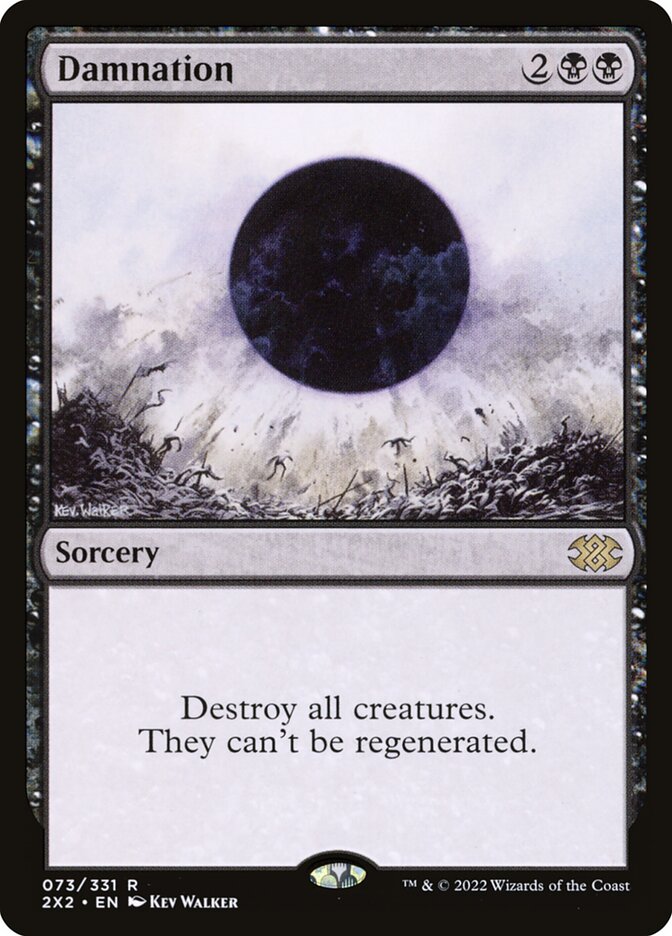
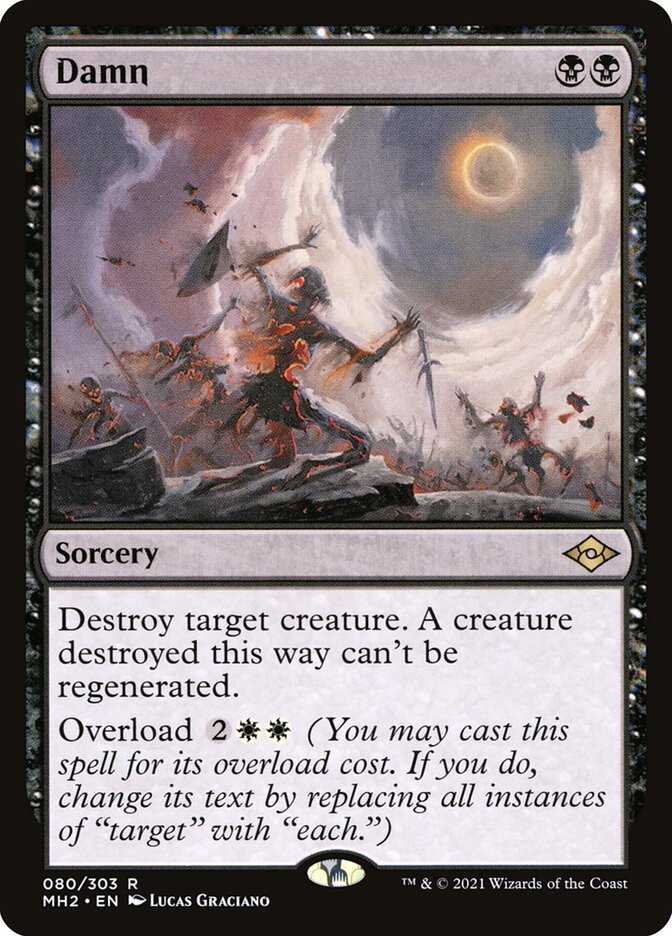
Of course, old standbys like Day of Judgment, Supreme Verdict and Damnation all work just as well as long as you're prepared to recover from and take advantage of the aftermath. Cards similar to these I really like are Damn and Winds of Abandon as they add the flexibility to be single target removal if you really don’t want to cast a full board wipe.
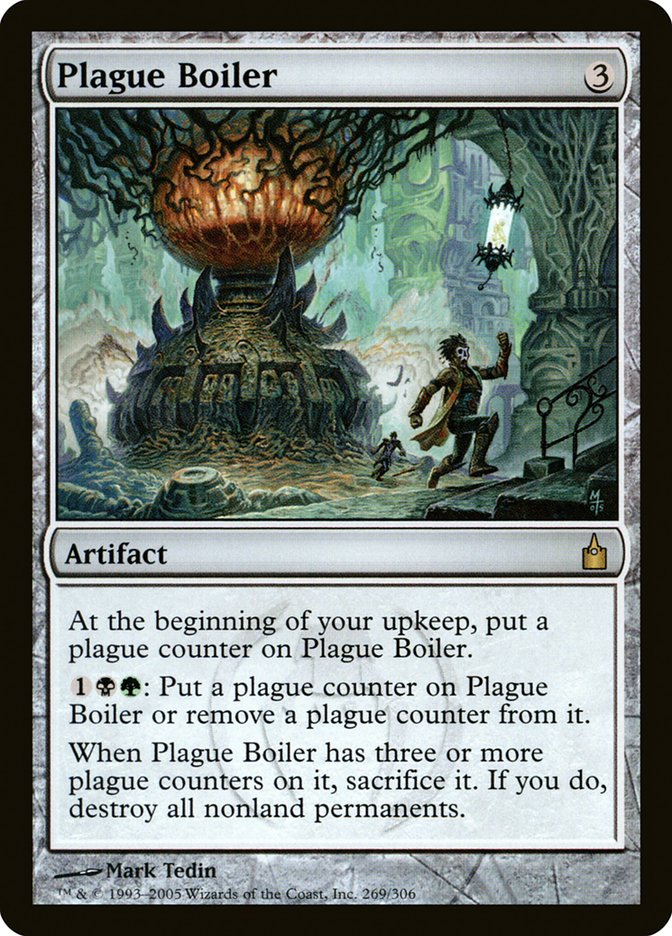
An honorable mention to Plague Boiler, with which I have held many a table hostage.
PERPLEXING TEST
There are a mountain of good mass removal these days to fit a number of strategies to where you don’t have to use the general good stuff, but when you should be using them is sometimes a struggle. Should you use a wipe to save yourself without a good follow up? Pull punches and let the game develop? Use it to help close the game now and hope it works out for you? That all depends.


If we look at something like Fell the Mighty, the new Arabella Abandoned Doll would probably love it. The deck’s creatures want to be low to the ground so casting Fell into almost any board state is probably fine when needed. For something a bit harder to read is casting a Living Death into another graveyard shenanigans deck. That scenario requires probably both good luck timing and some graveyard removal to get the most out of it.
Unfortunately, there are no right answers here, only better ones. This is because each individual player is going to play in individual metas. The best answer for a wipe in general terms is to cast it when you feel threatened by a board state and can deal with losing your own. It’s a very simplistic but good way to determine when you need to cast one.
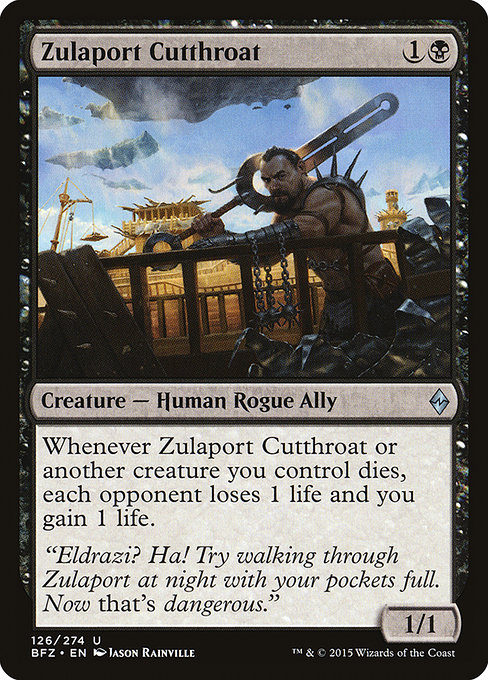
More specifically, knowing how your opponent’s cards and yours are affecting the game state at that time might lead you to not wipe the board and try to deal with it through targeted removal and politics. For instance, casting a board wipe when a Zulaport Cutthroat is in play might hurt you more than help. In that scenario you’d have to judge whether taking all of that life loss is better now or to let things play out a bit to see where they go. Someone might have said they don’t like the card and might get rid of it themselves or you could copy it. As long as it isn’t your turn when something goes boom, you could take a win out from under the other player.
TIME WIPE
Board wipes and mass removal are gaining more popularity with the advent of more and more powerful cards and Ward. Learning to both deal with them and recover from them will be more important as the game keeps adding powerful cards. On the bright side, there may be more interesting and flexible board wipes and mass removals just over the horizon.
Let me know what you think about the use of wipes in the comments below.
Until next time, be indestructible.










